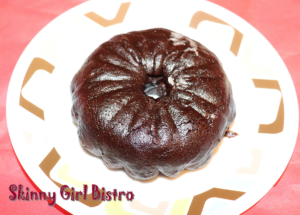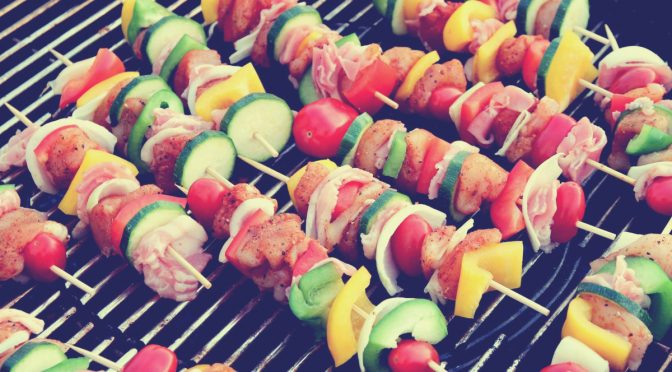Wow! Here we are at Christmas 2023! Where did the time go? For me, it seems like I was busy from the end of October all the way to now. While I did some cooking, not much of it was anything new to post on this page! Sorry for my absence in that regard.
I was working diligently on my new Low Carb Asian cookbook and working on getting the recipes right. I am still struggling with a low carb eggroll, but I have a couple of things yet to try to get it like the real deal. Hoping to get that out about mid-March.
As I mentioned previously, I have obtained a DASH mini-Bundt cake maker and it is really great to use. I made lovely Chocolate Kalua Cakes for my dinner group of friends and Chocolate Hazelnut cakes for the lunch group. None of these were low-carb, but of course, I have a low carb version. These are pretty much the same recipe, simply changing the alcohol or syrup used. You can get sugar-free coffee syrup, which is close to Kahlua and you can also get sugar-free hazelnut syrup. If you want the almond taste, then you can use sugar-free Amaretto. Guess what? You can also make it more festive by using sugar-free Peppermint for a Chocolate Peppermint cake!
You can bake these in mini-Bundt pans in the oven if you don’t have an electric mini-Bundt maker.
Chocolate Kahlua Mini-Bundt Cake
For the cake:
3/4 cup Sugar Substitute
1 cups low carb All-purpose Flour
1/2 cup Almond Flour or other low carb alternate
1/3 cup Cocoa Powder
3/4 teaspoon Baking Powder
3/4 teaspoon Baking Soda
1/4 teaspoon salt
1 Egg, room temperature
1/2 cup Unsweetened Almond Milk
1/4 plus 1 tablespoon Vegetable Oil
1 teaspoons Vanilla Extract
1/4 cup drip (or espresso) coffee
1/3 cup Kahlua or other coffee liqueur or syrup
For the glaze:
3/4 cup (160g) Confectioner’s Sugar Substitute
1 or 2 tablespoons Kahlua or other coffee syrup
INSTRUCTIONS
To make the cakes:
If you’re using mini-molds in an oven, preheat oven to 350 degrees F. If you’re using an electric cake maker, plug in to preheat.
Butter and flour your molds for the oven.
In a small bowl, add sugar, flour, cocoa, baking powder, baking soda, and salt and whisk to combine. Set aside.
In a large bowl, add egg, almond milk, vanilla, and oil and beat for about a minute.
Add dry ingredients to the wet ones in three batches. Beat on low speed so the flour doesn’t go flying. Mix each addition completely before adding the next.
Heat coffee until almost boiling. Mix with Kahlua and slowly add to batter while mixing.
For the electric Bundt baker, spray with cooking spray. Add enough batter to come just below the top of the electric cooker. Close the lid and cook about 4 minutes. Check with a toothpick to see if the cake is done. The cook time may vary depending on the thickness of your batter.
When the cake is done, remove to a parchment or foil covered pan, let cool a few minutes, then invert to remove from the bottom plate. If it doesn’t come off easily, run a thin knife (or a plastic knife) between the plate and the cake to release it. Let cake cool complete before turning it over.
Repeat until you’ve used all the batter. It should make about five cakes.
For the oven:
Pour into molds to about 3/4ths of the capacity. Use a measuring cup to pour the batter. Put molds on a large baking sheet and bake about 25 minutes. Use a toothpick inserted in center to test doneness. It will come out clean when cake is done.
Cool in the pans on a wire rack for about 15 minutes. invert the pan to release the cakes. If they don’t come out easily, use a thin knife or a plastic knife to slide around the edges gently and around the center post. Tap the bottom after you invert it and try again. If the cake still does not release, let it cool another 15 minutes. If it still won’t release, slide the knife down the side and gently pry under the cake.
To make the glaze:
In a small bowl mix a confectioner’s sugar with 1 tablespoon or more of coffee liqueur. Less liquer or syrup will give a thicker glaze. Spoon glaze over the cooled cakes and let it drip down the sides.
For a Hazelnut or Peppermint Cake, replace the Kahlua with hazelnut or peppermint syrup or liqueur. (Omit the coffee for these cakes. The batter will be thicker and the cooking time may be a little shorter.)
Tips: Alternate flours you can use are almond flour, hazelnut flour (for the hazelnut one), coconut flour (use 1/2 the recipe amount and add an egg), Oat Flour (the low carb one) Carb Counters All Purpose Flour and Carbolose. If you use Carbquik, your cake may be more like a biscuit. It already has some oil and baking powder in it.
These recipes make five or six mini Bundt cakes. Nutrition information is based on five cakes and using sugar-free syrup. I used Ghirardelli’s Dark Cocoa Powder, DCC Carb Counters, and Blue Diamond Almond flour.
Nutrition Information Per Cake:
Calories 256 , Total Fat 17g , Cholesterol 77mg, Sodium 620 mg, Potassium 145mg, Carbohydrates 14 g, Fiber 9.4 g, Sugars 1.7 g, Protein 19 g, Net Carbs 4.6 g
If you use Kahlua, it adds 65 carbs for 1/4 cup, so roughly 11 carbs per cake. I usually eat half a Bundt cake for a serving.
Christmas Dessert
For my Christmas dessert this year, I am making a Cranberry Apple Crumble. It’s a wonderful combination and I’ve made it before. I will post the recipe next week, so maybe you can make it for New Year’s!
Merry Christmas to all who celebrate and to those who don’t, have a wonderful week! You can eat cake for any occasion!
Note: Nutrition information is based on the ingredients I used in this recipe and my measurements. Although they are a close calculation, your results may be slightly higher or lower. Ingredient substitutions may affect the carb count. Different brands may have other carb counts.








 August has been a busy month with lots going on in my life, but I did get the new cookbook out and I just released, a few days ago, the compilation e-book with all three of the LC15 cookbooks in one edition. I had planned to sell it for a little less than it actually ended up at $1.99, which is 1/3 off the price of buying the three books. Amazon sets a minimum price based on the data size and the photos increased the size. I compressed it as much as I could. The 3-in-one is only available at
August has been a busy month with lots going on in my life, but I did get the new cookbook out and I just released, a few days ago, the compilation e-book with all three of the LC15 cookbooks in one edition. I had planned to sell it for a little less than it actually ended up at $1.99, which is 1/3 off the price of buying the three books. Amazon sets a minimum price based on the data size and the photos increased the size. I compressed it as much as I could. The 3-in-one is only available at 

